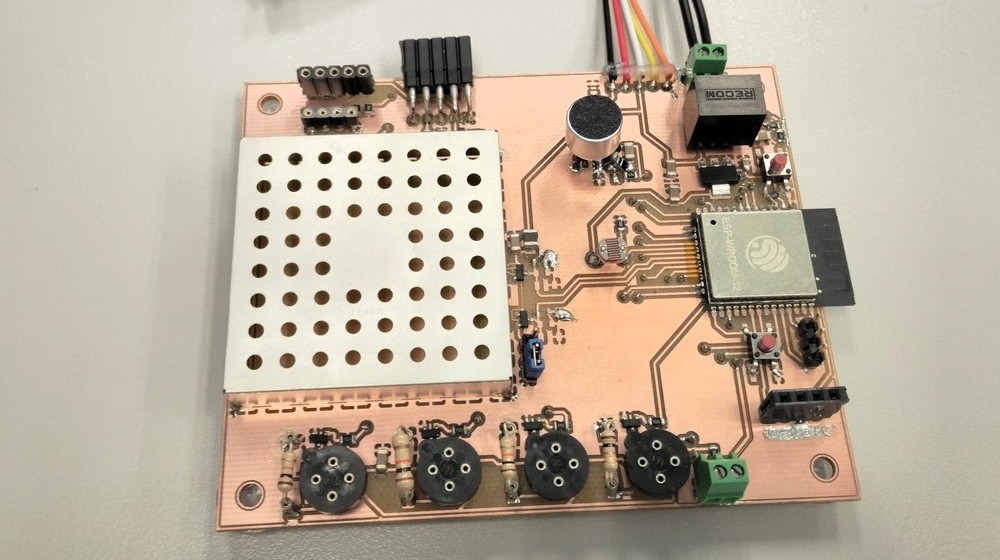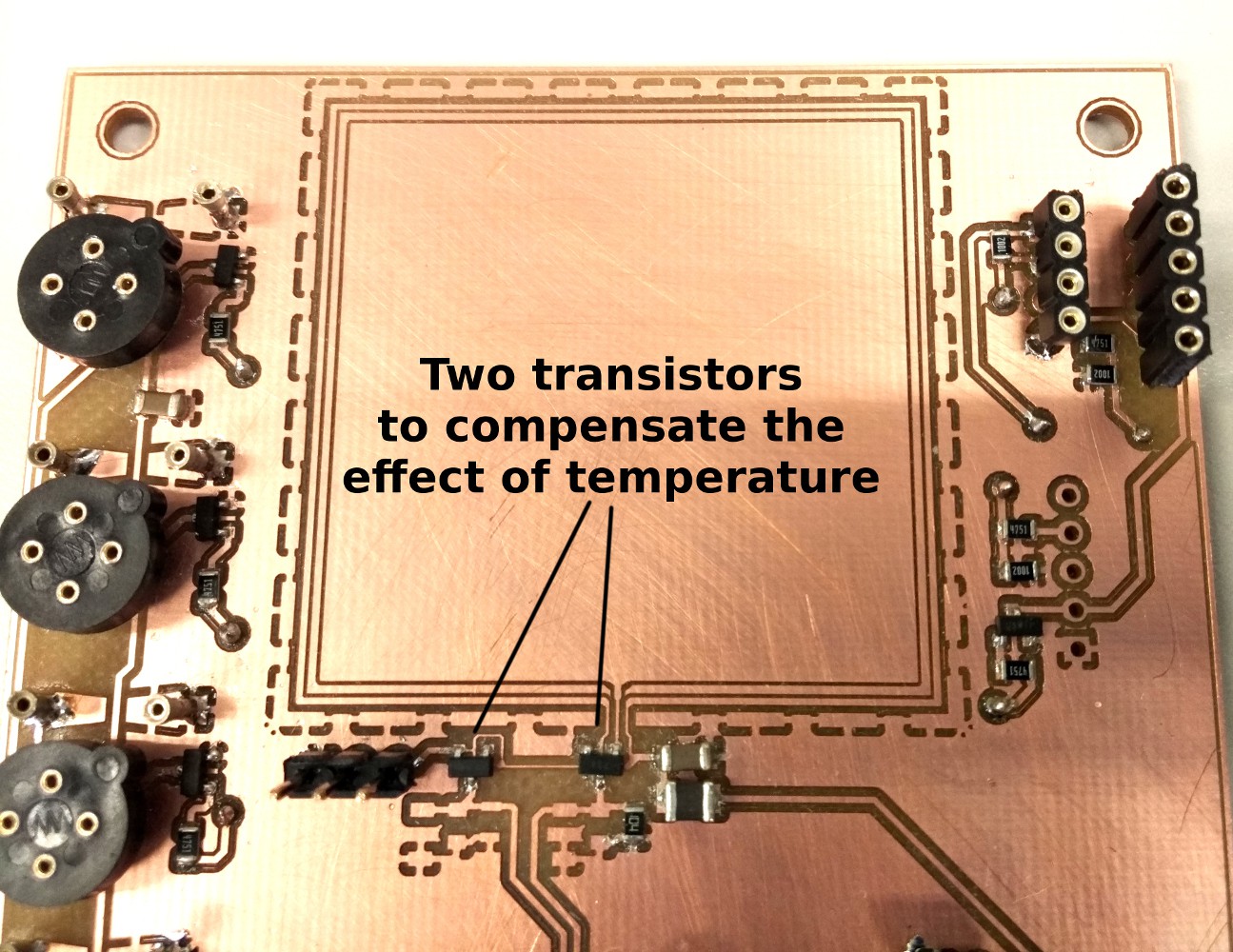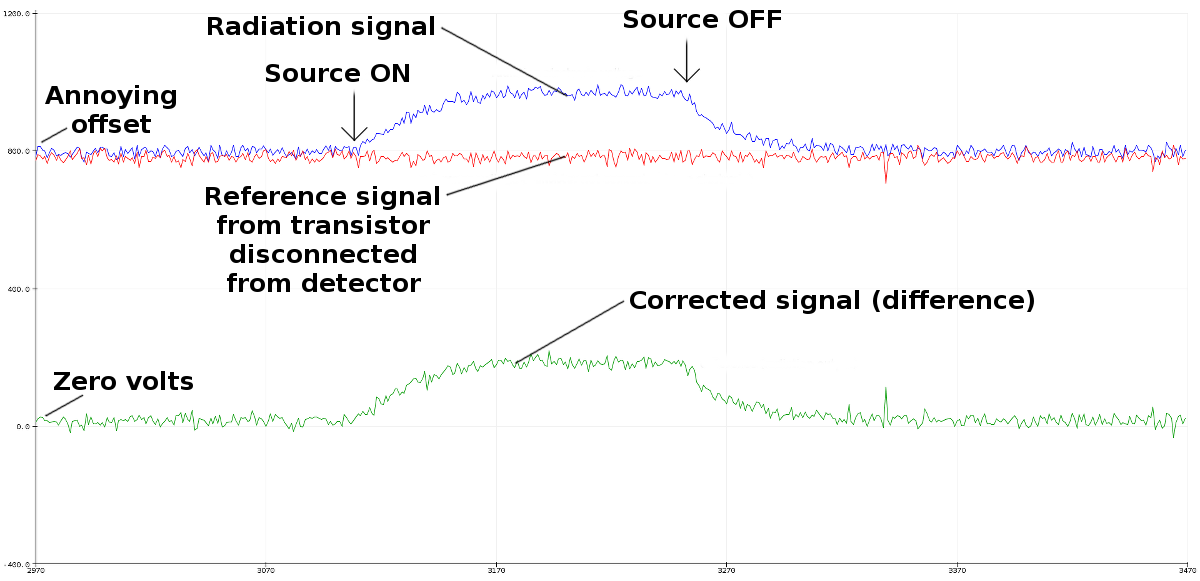The circuit we are using to measure radiation is derived from a DIY detector by Charles Wenzel: http://www.techlib.com/science/ion.html. It uses a high-gain Darlington transistor to amplify the tiny currents generated between the inner electrode and the outer shield.
For our design we have chosen the FMMT734 transistor, an up-to-date part with standard SOT-23 surface mount footprint. We use the PNP configuration rather than the commonly used NPN; this way it is possible to have the outer shield at ground voltage.

However in our first tests this circuit produced measurements that were very dependent on temperature. When temperature raises around the detector, the gain of the Darlington transistor is reduced and the output signal is substantially diminished.
This is why the fourth iteration incorporates two transistors: one of them is connected to the electrode, and the other one is left open. The radiation measurement is then corrected by subtracting the reference output voltage from the signal coming from the main amplifier.
Here are two pictures of the fourth prototype. The radiation sensor is the large metallic box, the rest of components are part of a plain old, boring IoT box (Internet of Things is soo 2016..).


The fourth prototype was successful - there is a clear signal whenever the radiation source is put close to the detector. Also, the offset and the effect of temperature are removed by subtracting the reference signal from the unconnected reference transistor:

The long-term test in a WiFi connected platform has also shown that the sensor is not capable of measuring the background radiation levels. Temperature changes over the course of hours and days, and this still has a notable effect that obfuscates any traces of low radiation levels (even after correcting with the reference transistor).
However the sensor does produce a signal when radiation sources are close to the detector. We believe this sensor will be useful in a portable hand-held device that can be brought near objects to check if they are radioactive or not.
Stay tuned for more updates, and tell us what you think! :-)
 Carlos Garcia Saura
Carlos Garcia Saura
Discussions
Become a Hackaday.io Member
Create an account to leave a comment. Already have an account? Log In.